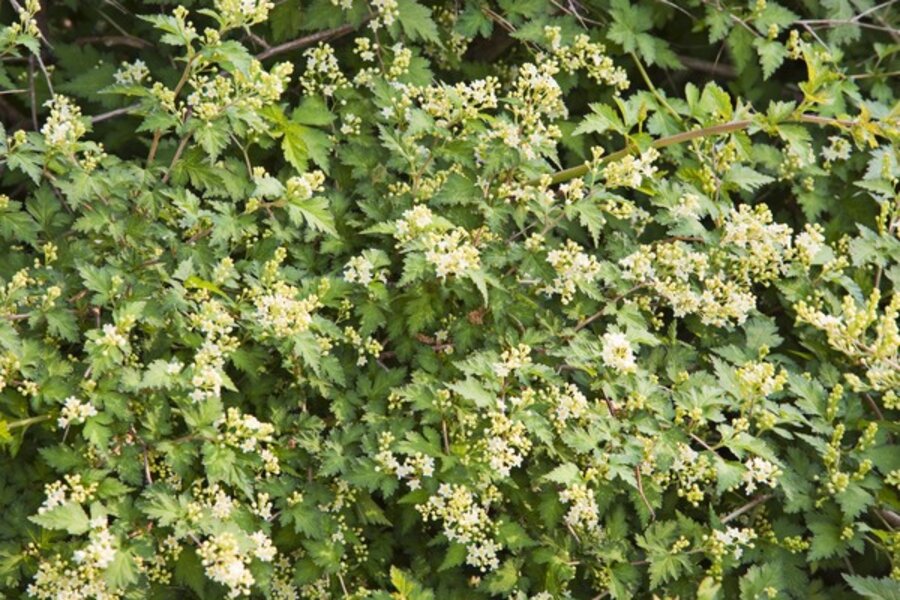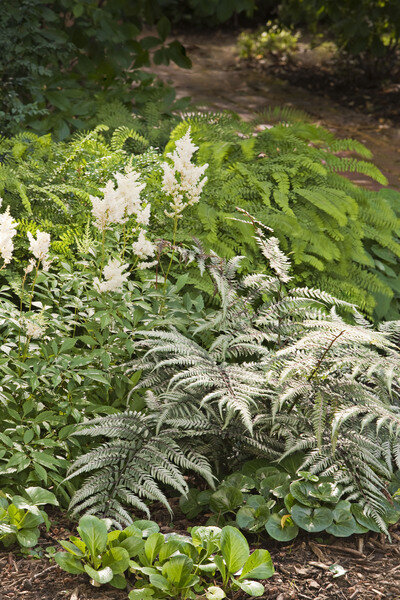Deer-resistant gardening made easy
Loading...
While gardening with deer can be a challenge, Ruth Rogers Clausen has some tips to make it easier.
Ms. Clausen is the author of the new book "50 Beautiful Deer-Resistant Plants" (Timber Press, $19.95), an enthusiastic guide to the best-performing deer-resistant plants for the garden.
Learn to recognize deer damage
According to the book, one of the first steps in preventing deer damage [pdf] is recognizing it. Because deer have no upper incisor teeth, they tear their food, resulting in ragged, torn leaves. This is the most obvious indicator that you’re dealing with deer eating your plants, rather than rabbits or woodchucks.
Another clear indicator of deer browsing is that the damage will usually occur from ground level to five feet up. If you can see from this evidence that deer are harming your large shrubs and trees, one way of avoiding damage is to purchase plants with a canopy above five feet in height, to allow your large shrub or tree to grow and photosynthesize without being eaten.
The last obvious signal to look for is deer droppings. Deer scat is usually a pile of small round droppings. If you see this, it’s clear what pest your plants are suffering from.
Repel deer and protect new plants from them
Clausen discusses a number of protective treatments to deter deer from munching on your plants.
Protective measures to existing plants tend to fall under two main categories; either putting up a physical barrier against deer -- such as a fence -- or using repellents to scare them away or make plants unpalatable.
For fencing, Clausen recommends the tried-and-true eight-foot-tall fence to deter leaping deer from crossing. However, she also shares the information that two, four-foot-high fences placed three to four feet apart will also do the trick, because deer are wary of becoming trapped between the two fences.
Repellents aren’t Clausen’s preferred method of dealing with deer. Most repellents are messy, only somewhat effective, and need frequent application or maintenance to perform their best.
However, they can be useful for protecting new plants from curious munching, or during dry times of the year when deer will often eat plants they don't normally favor.
A few of the repelling treatments she mentions include motion-sensing sprayers such as the Havahart Spray Away (to startle deer), commercial mixtures that make plants smell or taste bad like Plantskydd or Deer Off, and organic fertilizers with a pungent odor, such as fish emulsion, which she recommends applying at half strength to avoid overfertilizing.
Select deer-resistant plants
Clausen believes the best method for dealing with deer is growing deer-resistant plants.
As she notes in her book, “Some gardeners seem to shy away from the term 'deer-resistant plants,' almost as if such plants must be the runts of the litter. Nothing could be further from the truth. Deer favorites such as roses, daylilies and tulips are not the only showy, attractive garden plants around.”
Clausen proves the truth of this statement in the beautiful pages of her book, by showcasing a variety of garden plants with bold flowers, lush foliage, and a traditional cottage garden look.
One theme among many of the plants is fragrant foliage, such as that found on many herbs. One design scheme suggested in the book is to combine purple-leaved basil (such as ‘Osmin Purple’) with silvery lamb’s ears (Stachys byzantina), and an accent of dusty miller (Senecio cinerarea) or ‘Moonshine’ yarrow (Achillea millefolium ‘Moonshine’) for a splash of brighter flower color.
Ferns are also given their due here, with many design combinations suggested. [See first photo at left for a deer-resistant shade garden.] For woodland gardens, the ghostly Japanese painted fern (Athyrium niponicum) could be paired with silver-spotted lungworts (Pulmonaria) and maroon-leaved selections of coral bells (Heuchera).
The book mentions a number of annuals (signet marigold, castor oil plant), bulbs (allium [first photo at top], snowdrops), and flowering perennials (peonies, false indigo).
However, Clausen doesn’t ignore the back of the border, where taller plants such as Japanese spirea, cutleaf stephanandra [see second photo above; click on arrow at right base of first photo], and beautyberry [see second photo at left] are suggested.
While the varieties profiled are not unusual or exotic, homeowners will delight in having beautiful, easy-to-find selections that will most assuredly be successful in the landscape.
Using Clausen’s hand-picked varieties, it would be hard to fail at creating a cohesively designed deer-resistant garden that is a pleasure to spend time in.
-----
Genevieve Schmidt is a landscape designer and garden writer in the redwoods of northern California. She shares her professional tips for gardening in the Pacific Northwest at North Coast Gardening and on Twitter. To read more by Genevieve here at Diggin' It, click here.








